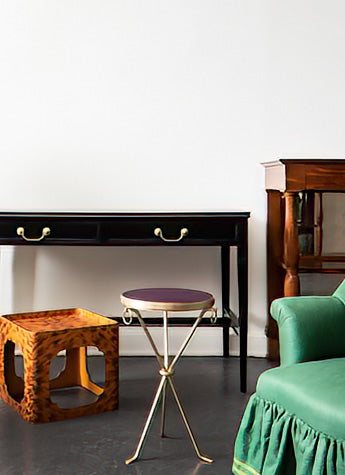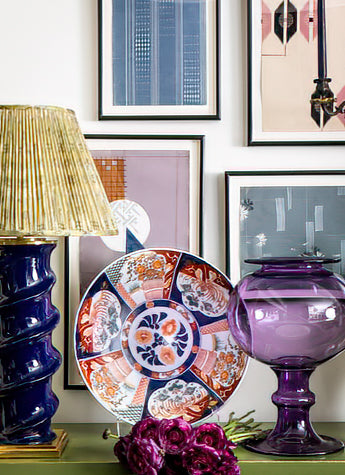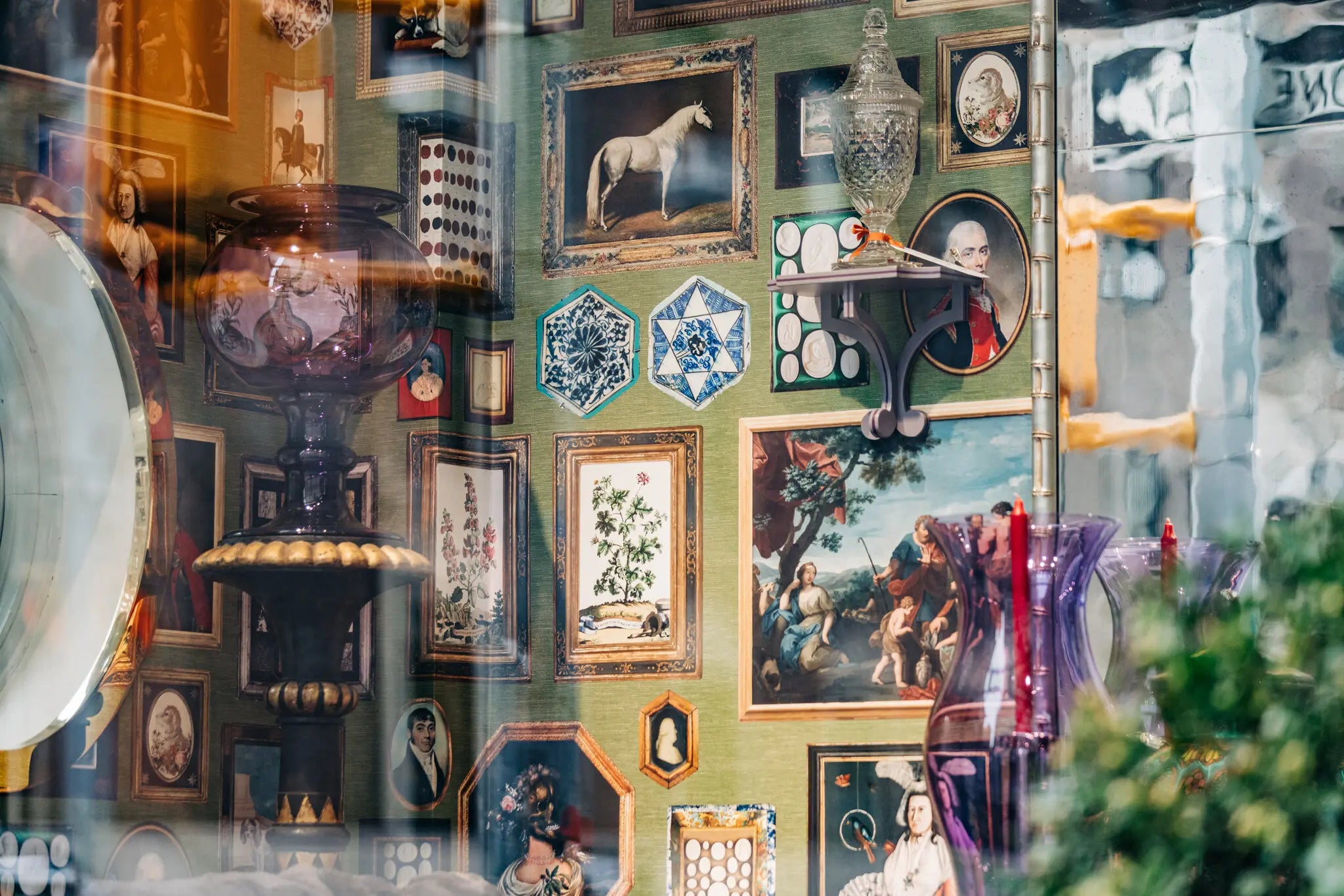Little Gems
For ‘Dope’ Window Shopping,
Try … the Upper East Side?
On a recent mild afternoon, on the northwest corner of Lexington Avenue and East 73rd Street, a cluster of students from the nearby St. Jean Baptiste High School stopped to ogle the phantasmagorical contents of a shop window.
Specifically, what intrigued them was an assortment of globular glass match strikers crowded atop a Venetian console. These, colored in swirly greens ranging from jade to poison, resembled nothing so much as the base of a bong.
“What are they?” one student was overheard asking.
“I don’t know,” her friend said. “But whatever they are, they’re dope.”
Kate Rheinstein Brodsky, the proprietor of the shop, KRB, has used its windows as a mad laboratory for forays into a highly singularized taste. In that sense, the place is part store and part workroom for experiments in blending objects of diverse quality, use and provenance, which Ms. Rheinstein Brodsky, 43, jumbles together with something akin to retail wizardry.
“I’m sure there are people who look in the window and say, ‘What are you thinking?’” she said.
And there can be little doubt that it is not only local high-schoolers who stop to puzzle over the displays that Ms. Rheinstein Brodsky has created using mirrors bristling with iron spikes by the craftsman Mike Diaz; polychrome glass leech bowls; fuddy-duddy Louis XVI-style armchairs reupholstered in outlandish fabrics; collages made of dried mugwort leaves by the decorating doyenne Marian McEvoy; and acid-trip wallpaper by Johnson Hartig, the maximalist designer of Libertine.

Collages made of leaves by Marian McEvoy line a wall of the store. Jeenah Moon for The New York Times.

Candelabra by the craftsman Mike Diaz. Jeenah Moon for The New York Times.

Vases by the ceramic artist Nicholas Newcomb. Jeenah Moon for The New York Times.

The design team of Bories and Shearron reimagined the store’s new space on Lexington Avenue into an eccentric sitting room. Jeenah Moon for The New York Times.
In certain ways KRB is a throwback not only to the glory days of brick-and-mortar retailing, but also to the broader urban pleasures memorialized by Walter Benjamin, the German critic and philosopher who famously took 13 years to compose his digressive (and unfinished) meditation on the delights of flânerie, “The Arcades Project.” It was substantially inspired by Benjamin’s window shopping jaunts in the glass-roofed arcades of Paris.
If Benjamin were to have had the streetscapes of contemporary Manhattan as his subject, he could probably have crammed the whole effort into a giveaway brochure. What once was an urban landscape characterized by curious and occasionally downright weird shop displays — one thinks of the surreal truss arrangements featured in surgical supply stores — has largely devolved into an unending vista of Chase banks and Walgreens.
It was to counter that trend that Ms. Rheinstein Brodsky, after stints at Ralph Lauren Home and Elle Decor, opened KRB on the Upper East Side in 2014. Three years later, she relocated it a few streets south.
Then, last summer, Ms. Rheinstein Brodsky moved again, this time to a stretch of Lexington Avenue that was long a decorator’s rialto, with a storied lineup of chic shops operated by style arbiters like the antiquarian Louis Bofferding, the interior designer Bunny Williams and Nina Griscom, a legitimately madcap socialite.
Ms. Rheinstein Brodsky commissioned the design team of Bories and Shearron to reimagine the new space, a 1,600-square-foot shoe box, into an eccentric sitting room where she flaunts an approach to design driven by an abiding affection for objects and by the influence of her mother, the interior designer and author Suzanne Rheinstein, who died last week.
“Growing up with my mother, I learned to love rooms and spaces that are deeply layered, filled with a mix of the new and old, the sentimental and antique,” Ms. Rheinstein Brodsky said. Thus, the catholic array of objects at KRB at any given time may include groupings of simple vases by Frances Palmer, warty ceramic frog planters by Jean Roger and Italian neoclassical chairs picked up on buying trips to the antiques fair in Parma, Italy, where Ms. Rheinstein Brodsky also recently scored a “killer” Pierre Lottier table with faux bamboo legs and a marble top resembling a helipad.
“It took me an hour to get up my courage,” Ms. Rheinstein Brodsky said, before she hit miles of dusty aisles in Parma. “It’s intimidating, everyone just sitting there with stuff in trucks, chain smoking cigarettes.”
If it is true that many objects at KRB carry stratospheric price tags, there are plenty of the usual books, candles and letter holders that are the gateway drugs of home décor. There is also the proprietor herself, an affable and unpretentious shopkeeper of the old school, one who often freely proffers advice and takes seriously the design precepts espoused by her mother, who for decades ran her own influential décor shop, Hollyhock, in Los Angeles.
“It’s not just about spending a lot of money,” Ms. Rheinstein Brodsky said. “It all goes back to my mother and how she always added a little bit of magic to whatever moment she created.”
When she was a child, Ms. Rheinstein Brodsky recalled, her mother routinely set the dinner table with antique porcelain. Never mind that the family was having takeout. “I think maybe we’ve lost a bit of that love for our domestic spaces and the things in them,” Ms. Rheinstein Brodsky said, “and for celebrating the everyday.”


